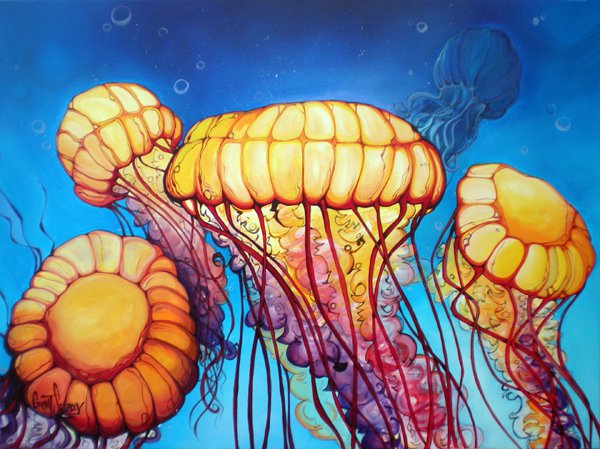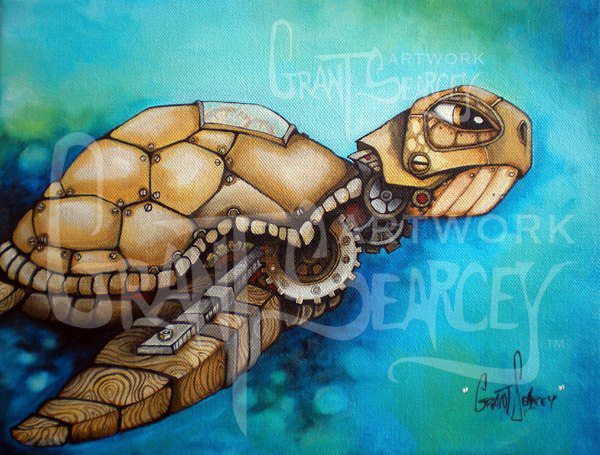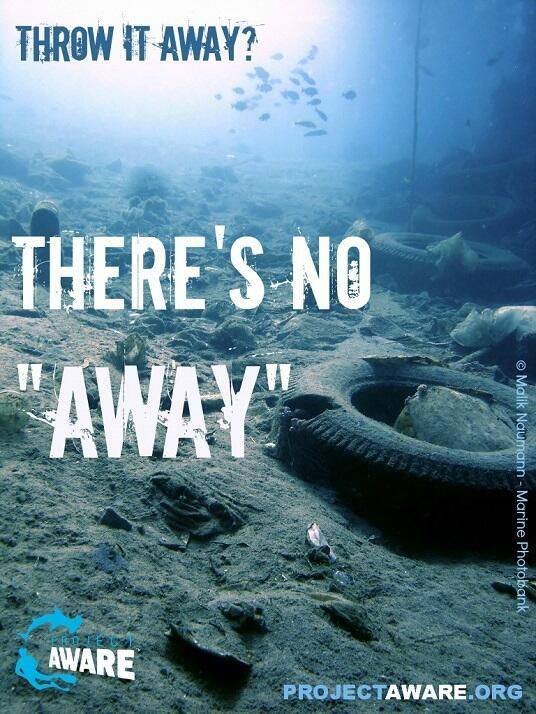There is a lot more to my world than just writing. There are a number of passions I have. This is the first of a new series of posts where I display some of that. I don’t really want to manage another website, so I’m adding old, revised posts from a former site about Conscious Living in a Plastic World. Enjoy.

The plastic bag first took on the role as a weird balloon, tossed about by the wind. It might have been a bit too low to the ground, but some kid probably thinks it looks cool. It hits the street, the road’s shoulder, and the wind would pick it up and carry it a bit further, having the wind breathe new life into it. Some bags seemed to die a quicker end to their balloon career by getting caught in a bush or tree—but the rain can take care of that.
The bag hits the water. The river. And it takes a long, long trip down to the ocean—and becomes something new, yet again. It looked like jellyfish. It bobs and floats so serenely in the ocean, content with life. A dead thing looking like a living thing.
Too bad, though: That last part is a killer.
Years ago, I took a boat ride with Captain Meg of Botany Bay Eco Tours down at Edisto Island. She’d studied as a marine biologist, and there was quite a lot she could tell us about the life of the salt marshes and their unique eco system. (There are other captains now, and the tour with Sarah Burnel is also fascinating. If you are near there, I highly recommend it!). We saw the fins of dolphins, and as we toured the mar
shes and sound she’d turn her boat so we’d pick up trash. There were bags floating in the waters. I think we picked up three. Then she told us about one of her first jobs as a marine biologist. She did necropsies on Loggerhead Turtles.

If you stay on the islands, and you are renting a house, you know about Loggerheads. The rental agencies make sure you know about them. The houses have notices on the fridge. They are emphatic: There are several months one cannot have outdoor lights on. Those lights confuse the turtles looking for the moon as a guide, especially the hatchlings. They see the brighter light, and head away from the ocean where they must go (For more information: http://www.dnr.sc.gov/seaturtle/lights.htm). My mother would go so far as to insist on closing the blinds so even our indoor lights don’t shine out to the beach. Back home, I don’t always think about turning off a light as I leave a room. Why would I? It doesn’t impact anything except my electric bill (and coal burning, etc. We’re a long way from solar power being a primary source of generating electricity… whole other topic).
On Meg’s boat ride, we learned that she’d necropsied so many turtles and the thing that killed them the most: trash. Cans, plastics, plastic bags.
After that trip, I started picking up trash along the roadside, and the hiking trail I love the most. So much so that a friend sent me the article Stepping Out, by David Sedaris, and my twin sent me an article about artist Tommy Kleyn, who got sick of trash on his daily walk to work along the Schie waterway. . It is a growing delight that more people pick up trash when they go for walks. The more people who do this, the better our world will be. There is no “away” when we throw it away. Just out of sight, in the growing  number of trash gyres floating in our oceans, or on the ocean floors… or in an animal’s stomach.
number of trash gyres floating in our oceans, or on the ocean floors… or in an animal’s stomach.
One year, I took green bags on our yearly trip to Edisto, for when I went shopping. I refused plastic, but… one bagger seemed stumped by the whole green bag thing. The checkout girl had to talk her way through how to use the bag. It was a bit disturbing to watch this semi-internal dialogue as she tried to turn this foreign thing into a bag, when there were all these readily available plastic bags for her to put my groceries in. She couldn’t understand why I refused to let her bag my food into future Balloon Jellyfish. Another time, before my twin and I noticed, and could stop her, another bagger wrapped *everything* in plastic putting it in our green bag. I didn’t bring my own green bag to use more plastic. Frankly, I couldn’t help but be astonished by how often a place so concerned about Loggerheads and lights might forget about plastic. Why they wouldn’t ask customers to bring their own bags, or have them for sale.
Why does it matter that I, living in North Georgia would think of turtles along the South Carolina coast, along the Atlantic, really. Why do I spend time picking up bags and trash thousands of miles away. Yes, it is also for my own environment, but it is more than that. It is for the same reason I’d knock on a neighbor’s back windows at Edisto, vibrating with anger about the incredible blaze of lights they have, unthinking, left on.
That bag hitting the river from alongside the road in my mountain town gets to the river. All rivers go to the ocean. And that plastic bag looks like a jellyfish. Guess what Loggerhead Turtles’ favorite foods is. Jellyfish. A dead, plastic thing looking like a meal.
Too bad, though: that last part is a killer.